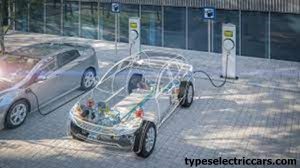How do electric car engines work? How do electric car engines work? The controller takes power from the battery and passes it on to the electric motor. Before passing current to the motor, the controller converts 300 volts of DC into a maximum of 240 volts of AC.
How do electric car engines work?
Electricity flows to a motor that contains two types of magnets:
- The first type is fixed and the second is rotary, which rotates to turn the wheels.
- The electric motor then converts electrical energy into mechanical energy.
- Mechanical energy moves the car forward.
- And the control devices act as an intermediary between the battery and the engine.
- Transferring energy from the battery and pumping it to the engine to work.

Electric Vehicle Components
- Variable potentiometers are located between the motor and the controller and are responsible for providing the proper power to the motor.
- The motor initially does not output any volts but when fully pressed it gives the maximum output.
- In an electric car, 95% of the energy is used, but in ordinary cars, only 30% of the energy is used.
- The electric motor has fewer parts than a normal motor, so it rarely needs maintenance.
Electric cars
- When the electric vehicle is in motion, the forward momentum generated by the electric motor can be used to charge the batteries when applying the brakes.
- This is a phenomenon referred to as regenerative braking and can recover up to 15% of the energy used for acceleration.
- The electric car driver cannot travel long distances and must adhere to the distance decided by the producing company, which usually does not exceed half the expected distance before recharging.
- By comparing the number of electrical stations.
- We find that they are few compared to the traditional stations that are scattered everywhere.
- The car can be charged from an electrical source attached to the house, factory, or company.
- However, the charging process takes several hours, unlike fast-charging stations.
- Which charge approximately 80% of full power in half an hour.

